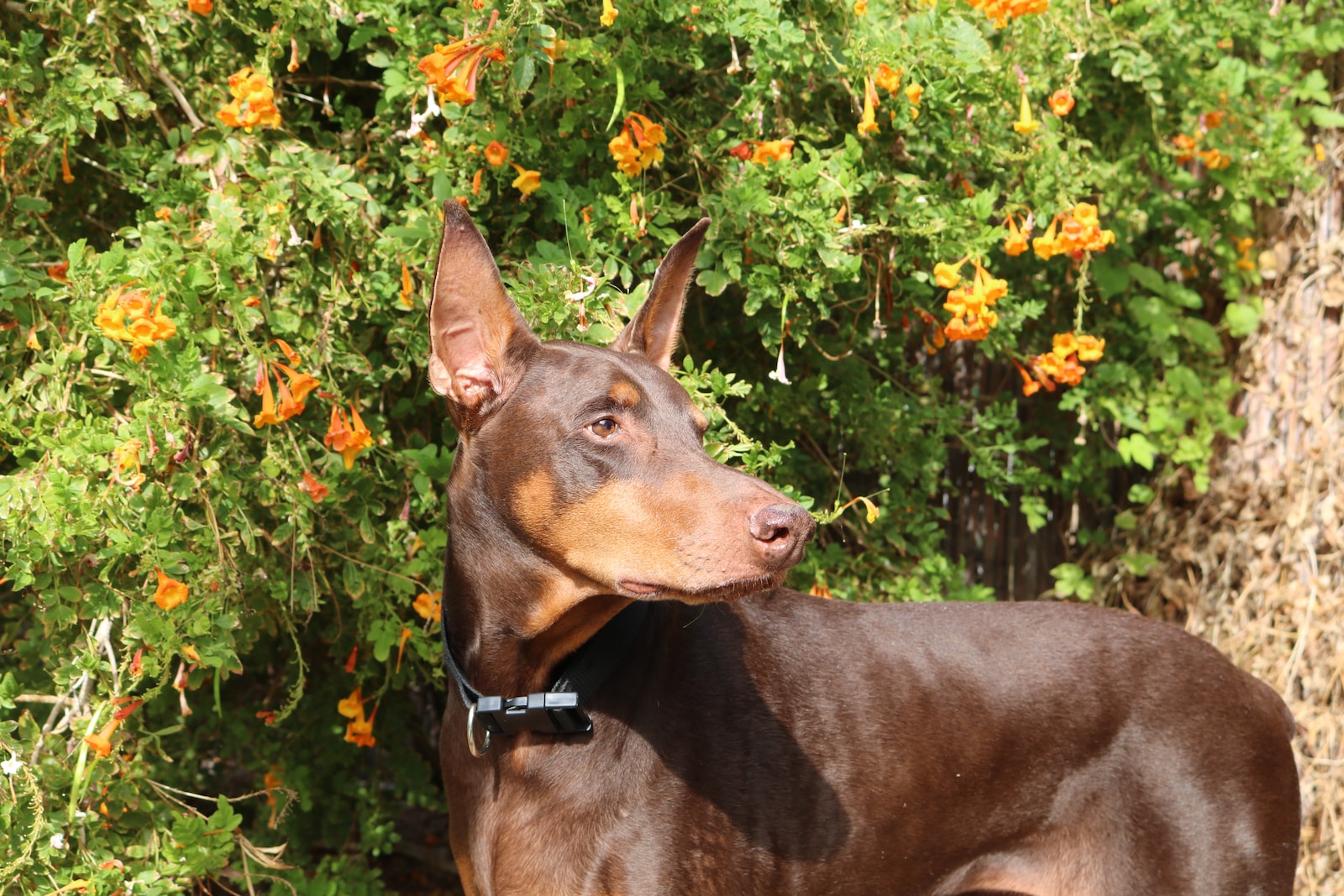Are you torn between choosing a Chocolate Labrador Retriever or a Red Doberman Pinscher as your new furry companion? Making the right decision requires understanding the unique characteristics of each breed. In this article, we will explore the world of these two delightful dog breeds, comparing their temperaments, exercise needs, trainability, and more. Join me on this journey to discover which breed is the perfect fit for you!
Chocolate Labrador Retriever: A Sweet and Energetic Companion
Origin and History
The Chocolate Labrador Retriever has a fascinating history that traces back to Newfoundland, Canada. Originally bred as working dogs for fishermen, they earned a reputation for their intelligence and friendly nature. Eventually, they transitioned into beloved family pets.
Physical Appearance
With their captivating beauty, Chocolate Labradors possess several distinctive features:
- Coat Color: As their name suggests, Chocolate Labradors have luscious chocolate-colored coats ranging from light brown to rich, deep tones.
- Build: These dogs have a well-balanced and muscular body, built for endurance. Their expressive faces, kind eyes, and broad heads add to their overall charm.
- Size: Falling into the medium to large breed category, males typically stand between 22.5 and 24.5 inches (57-62 cm) tall, while females are slightly shorter.
Temperament and Personality
- Playful and Friendly: Chocolate Labradors are known for their exuberant and joyful nature, making them wonderful companions for families with children and other pets.
- Intelligent and Trainable: These Labradors possess sharp minds, making them highly trainable. They thrive on positive reinforcement, making training sessions enjoyable and effective.
- Eager to Please: Chocolate Labradors have an innate desire to please their owners, which contributes to their trainability and loyalty. They form strong bonds with their families and love participating in various activities.
- Sociable and Affectionate: These dogs are social butterflies, enjoying the company of humans and other animals. Their friendly and outgoing nature makes them great therapy dogs and companions for individuals of all ages.
Exercise Needs
To keep a Chocolate Labrador happy and healthy, regular exercise is essential. These energetic dogs thrive in active households that can provide them with plenty of physical and mental stimulation. Here are some ways to fulfill their exercise requirements:
- Daily Walks: Taking your Chocolate Labrador for brisk walks or jogs helps them burn off excess energy and maintain overall well-being.
- Interactive Play: Engage in interactive games like fetch or hide-and-seek to stimulate their minds while keeping them physically active.
- Swimming: Many Chocolate Labradors have a natural affinity for water, so swimming can be an excellent form of exercise to keep them cool and content.
Trainability
Thanks to their high intelligence and eagerness to please, Chocolate Labradors are highly trainable. They excel in obedience training, agility, and even specialized tasks like search and rescue. Starting their training from an early age ensures they learn proper manners and obedience commands. Consistency, positive reinforcement, and patience are key to successfully shaping their behavior.

Red Doberman Pinscher: A Bold and Loyal Protector
Origin and History
Originating in Germany during the late 19th century, the Red Doberman Pinscher is a breed known for its striking reddish-brown coat. Initially bred for their protective instincts and loyalty, they have evolved into cherished family companions renowned for their intelligence and versatility.
Physical Appearance
The Red Doberman Pinscher’s appearance exudes strength and elegance. Here are some defining characteristics:
- Coat Color: The Red Doberman’s most distinguishing feature is its rich reddish-brown coat, which can range from deep mahogany to a lighter copper shade.
- Build: These dogs have a well-muscled and athletic body, with a proud posture and deep chest. Their alert eyes, wedge-shaped heads, and cropped ears (where legally allowed) contribute to their distinctive appearance.
- Size: Red Dobermans are classified as a medium to large breed, with males typically standing between 26 and 28 inches (66-71 cm) tall, and females slightly shorter.
Temperament and Personality
- Loyal and Protective: Red Dobermans are fiercely loyal to their families and possess strong protective instincts. They are vigilant and always aware of their surroundings, willing to defend their loved ones if they sense a threat.
- Intelligent and Alert: This breed’s high intelligence allows them to quickly grasp commands and learn new tasks. Their alertness and sharp senses make them excellent candidates for activities such as search and rescue, obedience competitions, and therapy work.
- Energetic and Active: Red Dobermans have abundant energy and require regular exercise to stay mentally and physically balanced. They thrive in environments that provide ample opportunities for exercise, whether through walks, runs, or engaging in canine sports.
- Affectionate and Devoted: Despite their protective nature, Red Dobermans form strong bonds with their families and crave affection and attention. They enjoy spending quality time with their loved ones and thrive in homes where they can be fully integrated into family life.
Exercise Needs
Meeting the exercise requirements of a Red Doberman is crucial for their overall well-being and mental stimulation. Regular exercise helps prevent behavioral issues and channels their energy into positive outlets. Here are some activities that can help fulfill their exercise needs:
- Daily Runs or Jogs: Red Dobermans have high energy levels, so engaging in vigorous physical activities like running or jogging alongside them can provide the exercise they require.
- Mental Stimulation: In addition to physical exercise, mental stimulation is equally important for Red Dobermans. Puzzle toys, obedience training, and interactive games can help challenge their sharp minds and keep them content.
- Obedience Training: Regular training sessions not only enhance their obedience but also provide mental stimulation. Consider enrolling your Red Doberman in advanced obedience classes or agility training to keep them mentally engaged.
Trainability
Red Dobermans are highly trainable due to their intelligence and eagerness to please their owners. However, they require consistent and firm training methods from an early age to establish boundaries and reinforce positive behavior. Their natural intelligence enables them to learn quickly, making them suitable for various training activities and tasks.
Making the Choice: Chocolate Labrador or Red Doberman?
Choosing between a Chocolate Labrador Retriever and a Red Doberman Pinscher requires careful consideration of various factors. Here are some aspects to ponder:
- Lifestyle and Activity Level: Both breeds are suitable for active lifestyles, but Red Dobermans may require slightly more exercise due to their higher energy levels.
- Family and Social Interactions: Chocolate Labradors’ friendly nature makes them a great fit for families with children and other pets, while Red Dobermans excel at protecting their loved ones.
- Protection and Guarding: If you seek a dog with strong protective instincts, the Red Doberman’s natural inclination towards guarding may be more suitable.
- Training and Trainability: Both breeds are highly trainable, but Chocolate Labradors may be slightly easier to train for novice owners due to their eagerness to please.
- Grooming Requirements: Chocolate Labradors have low grooming needs, while Red Dobermans may require more attention, including brushing and occasional baths.
- Size and Living Space: Consider the size of your living space when deciding between the two breeds, as both Chocolate Labradors and Red Dobermans are medium to large-sized dogs.
Frequently Asked Questions (FAQ)
1. Are Chocolate Labradors and Red Dobermans suitable for families with children?
Both Chocolate Labradors and Red Dobermans can make excellent companions for families with children. Chocolate Labradors are known for their friendly and gentle nature, which makes them well-suited for households with kids. Red Dobermans are also generally good with children, although their larger size and protective instincts should be considered. Proper socialization and supervision are essential to ensure a safe and harmonious environment for both the dog and the children.
2. Can Chocolate Labradors and Red Dobermans get along with other pets?
Both breeds have the potential to coexist peacefully with other pets, provided they are properly socialized from a young age. Chocolate Labradors, with their sociable nature, usually get along well with other animals. Red Dobermans can also get along with other pets, but their protective instincts may be more pronounced. Early socialization, gradual introductions, and consistent training can help foster positive relationships between these breeds and other pets in the household.
3. How much exercise do Chocolate Labradors and Red Dobermans need?
Both Chocolate Labradors and Red Dobermans have high energy levels and require regular exercise to keep them physically and mentally stimulated. Chocolate Labradors benefit from daily activities such as walks, runs, and interactive play sessions to burn off excess energy. Red Dobermans are also energetic and thrive with vigorous exercise, including regular walks, jogs, and engaging in activities like obedience training or canine sports. Providing adequate exercise is crucial to prevent behavioral issues and promote overall well-being for both breeds.
4. Are Chocolate Labradors and Red Dobermans easy to train?
Both Chocolate Labradors and Red Dobermans are highly trainable due to their intelligence and eagerness to please their owners. Chocolate Labradors are known for being quick learners and respond well to positive reinforcement techniques. Their desire to please makes them relatively easy to train, even for novice owners. Red Dobermans are also intelligent and trainable but may benefit from consistent and firm training methods to establish boundaries and reinforce positive behaviors. Early socialization and obedience training are essential for both breeds to ensure well-rounded and obedient dogs.
5. What are the grooming requirements for Chocolate Labradors and Red Dobermans?
Chocolate Labradors have short coats that require minimal grooming. Regular brushing to remove loose hair and occasional baths are usually sufficient to keep their coats clean and healthy. Red Dobermans also have short, sleek coats that are relatively low maintenance. Regular brushing can help control shedding and keep their coats shiny. Additionally, routine ear cleaning and nail trimming should be included in their grooming routine for both breeds.
6. Can Chocolate Labradors and Red Dobermans adapt to apartment living?
While both Chocolate Labradors and Red Dobermans can adapt to apartment living, they require sufficient exercise and mental stimulation. These breeds are medium to large in size and thrive with ample space to move around. If living in an apartment, it is crucial to provide regular exercise through walks, trips to dog parks, or other activities to meet their needs adequately. Additionally, mental stimulation through puzzle toys, obedience training, and interactive games is essential to keep them mentally engaged and prevent boredom.
Ultimately, the choice between a Chocolate Labrador and a Red Doberman depends on your preferences, lifestyle, and ability to meet their specific needs. Spend time interacting with individuals of each breed, seek advice from reputable breeders or shelters, and consider your unique circumstances before making a decision.
Whichever breed you choose, be it the sweet and energetic Chocolate Labrador or the bold and loyal Red Doberman, you are embarking on a rewarding journey filled with love, laughter, and unforgettable memories. Get ready to open your heart and home to a four-legged friend who will undoubtedly become an invaluable part of your life.

